
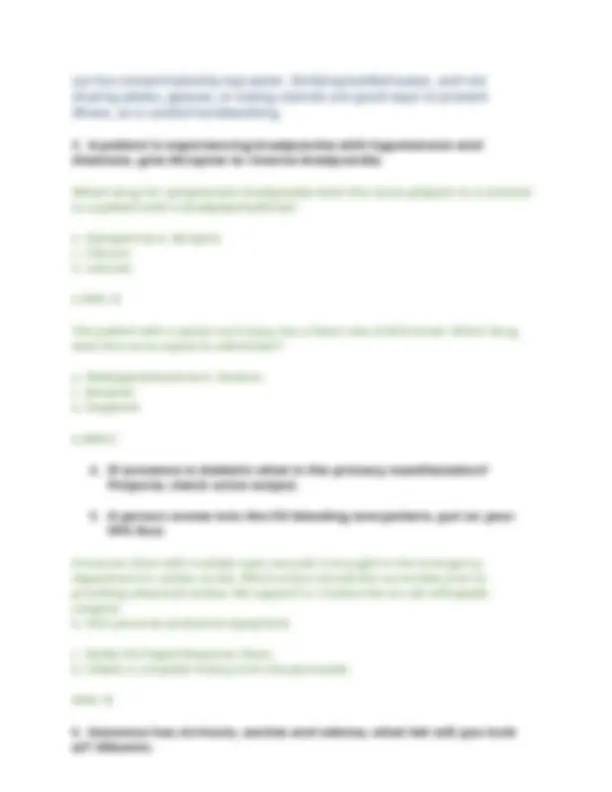

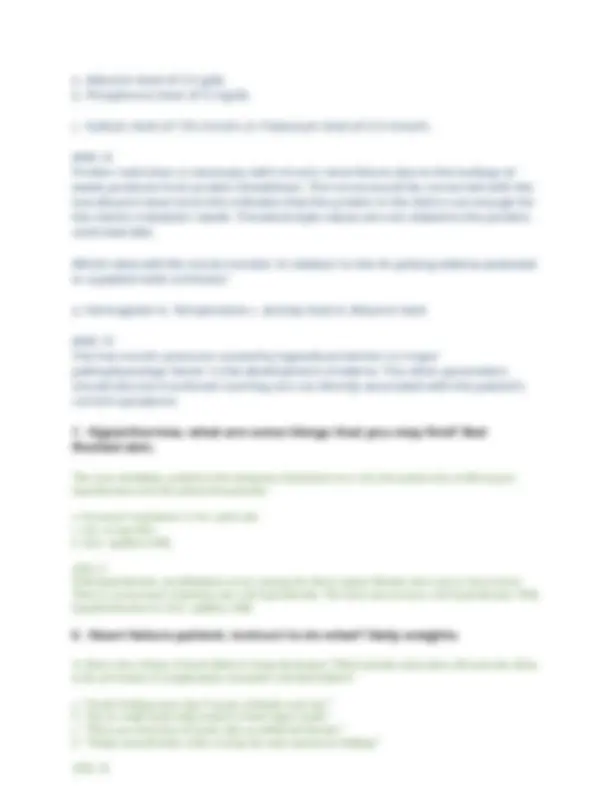

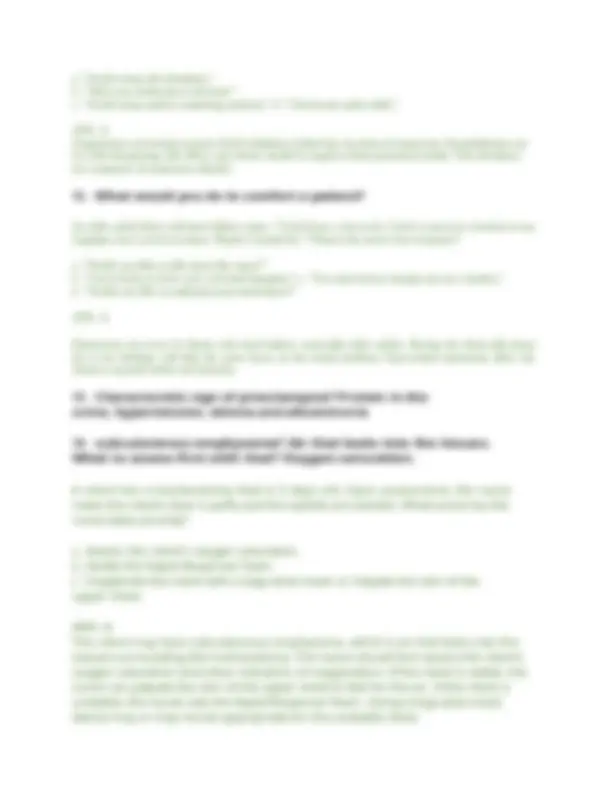
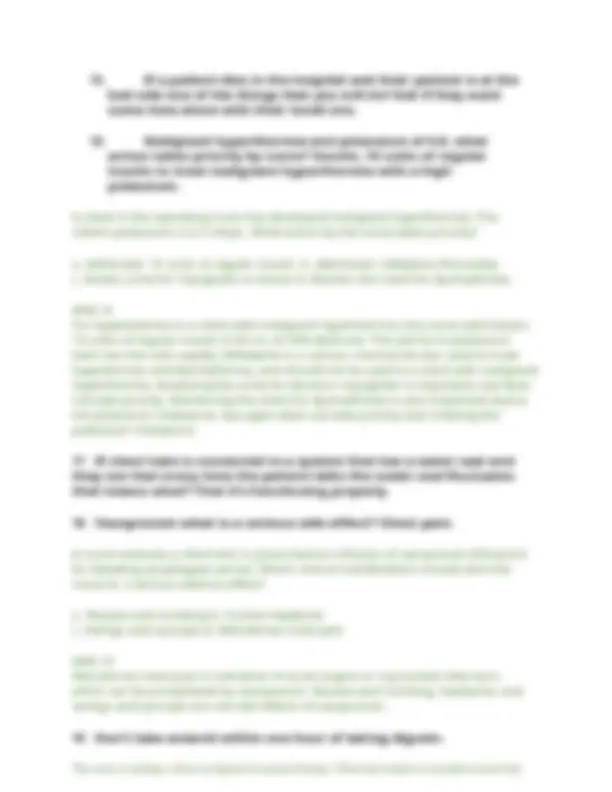

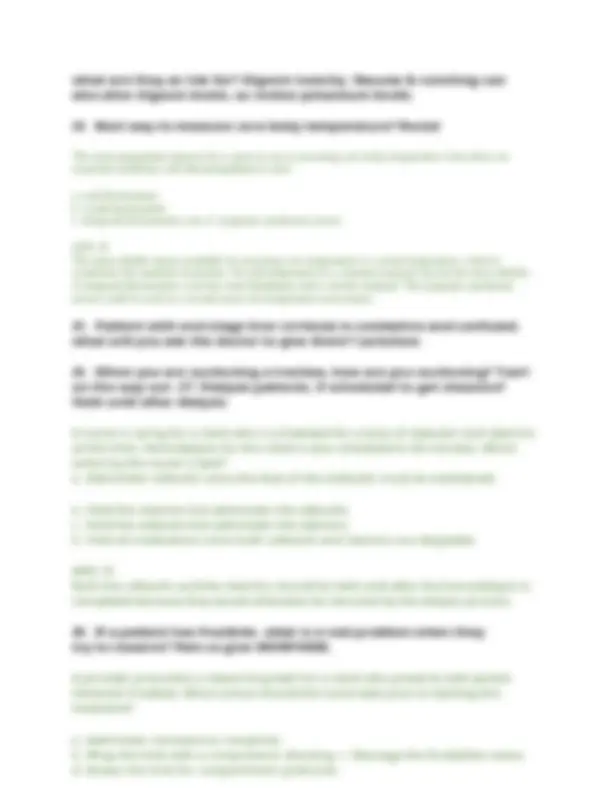
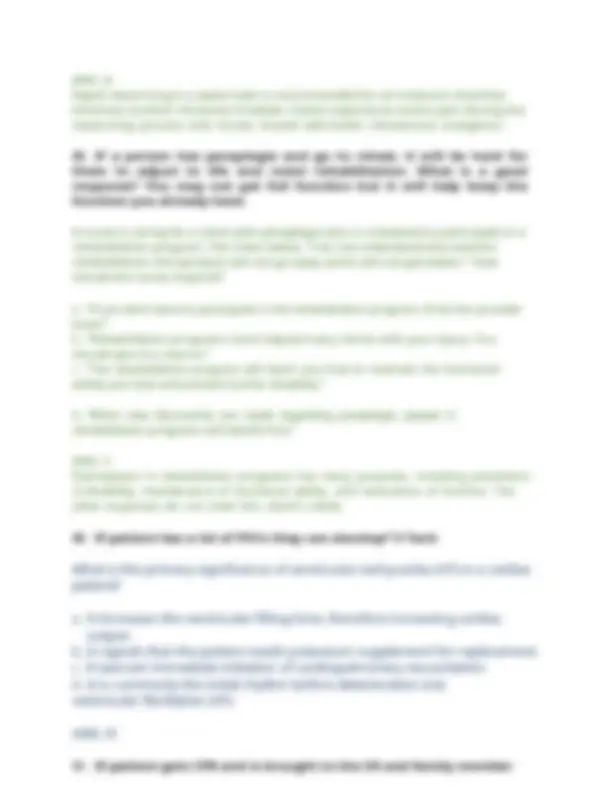

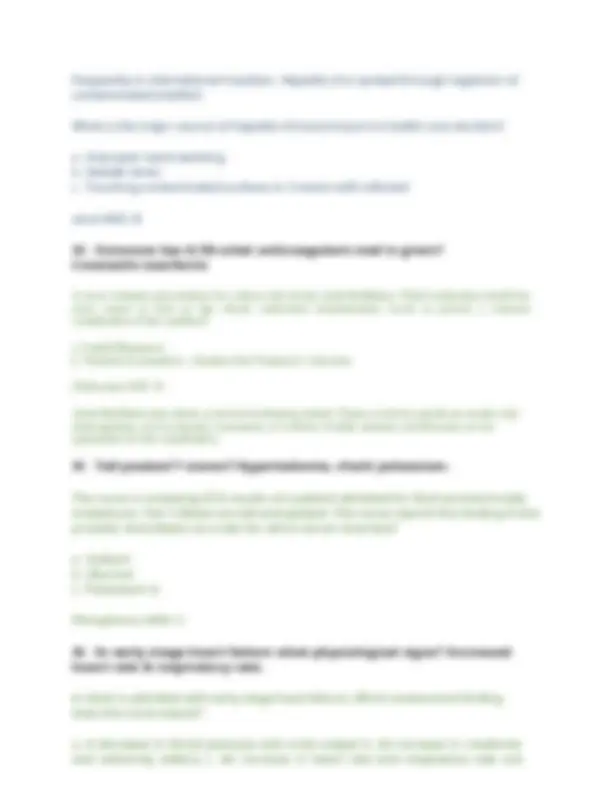

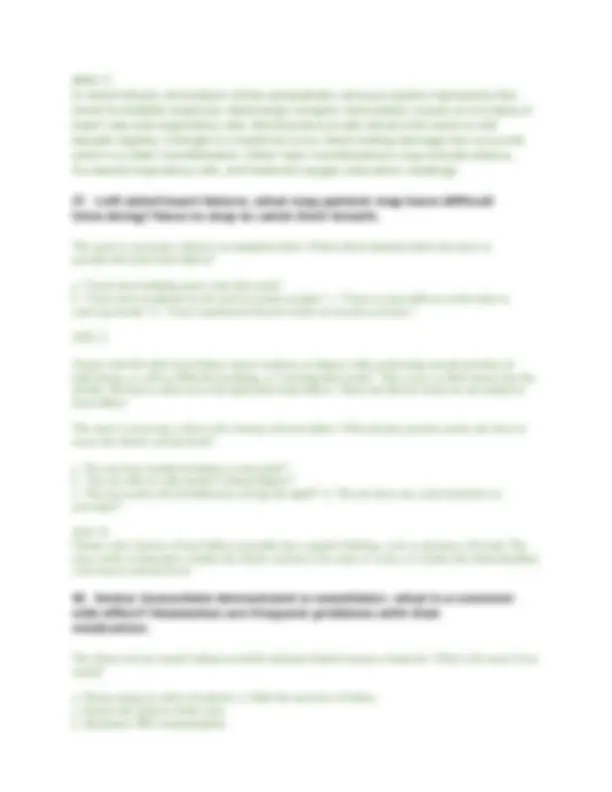
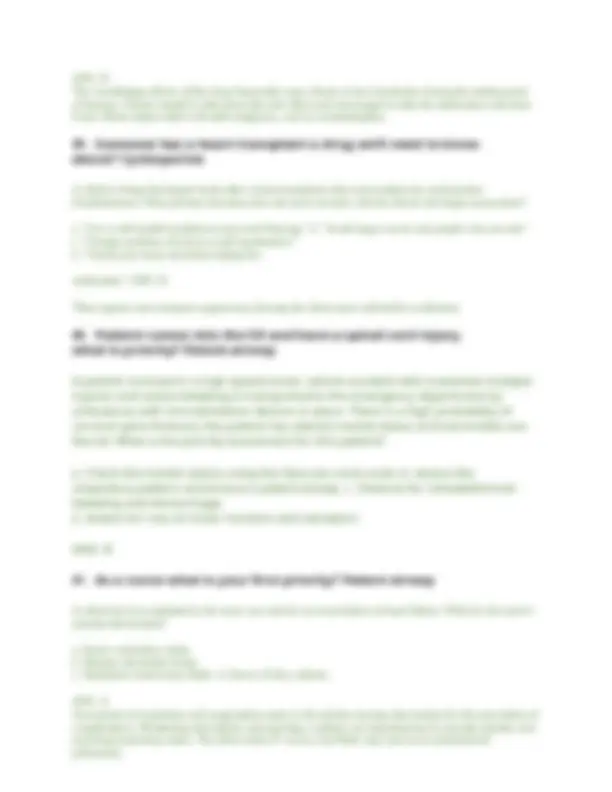
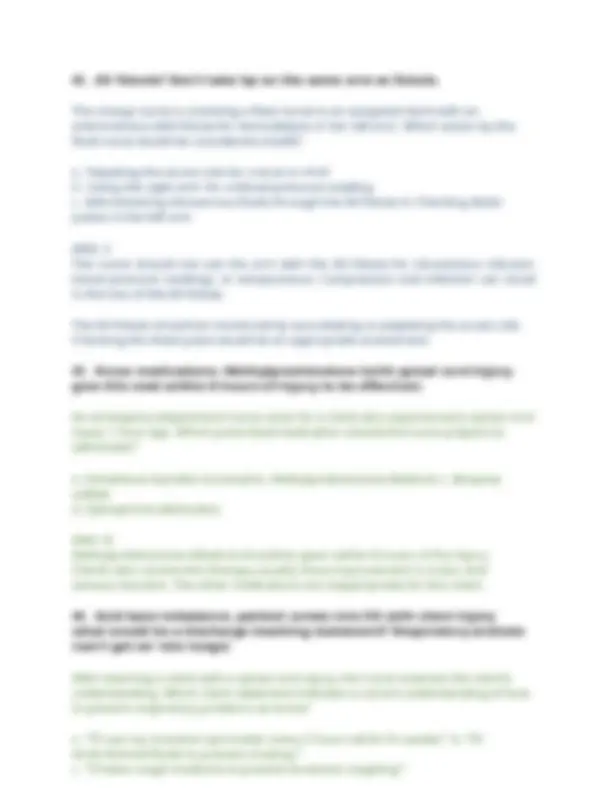

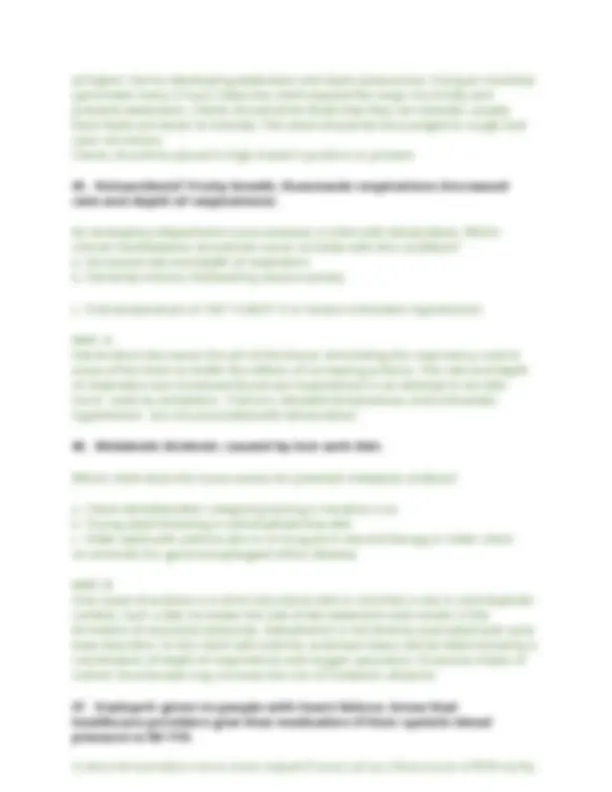

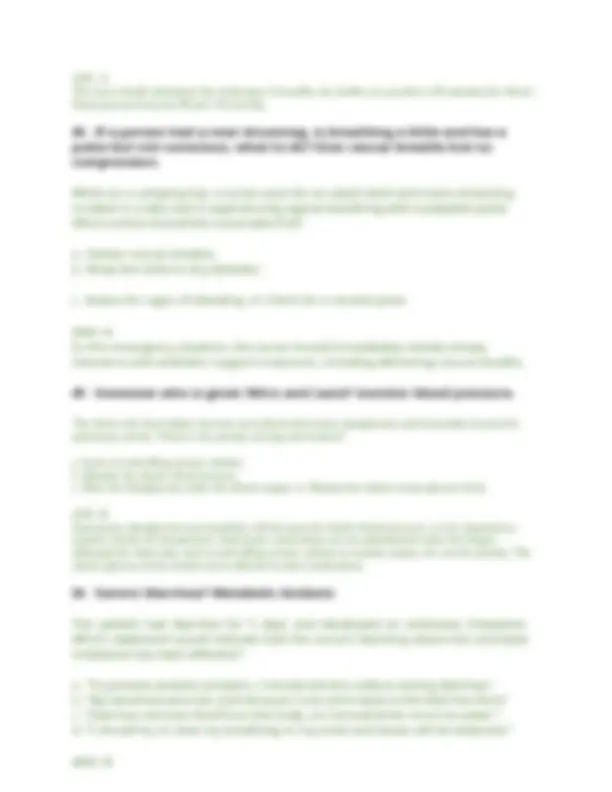

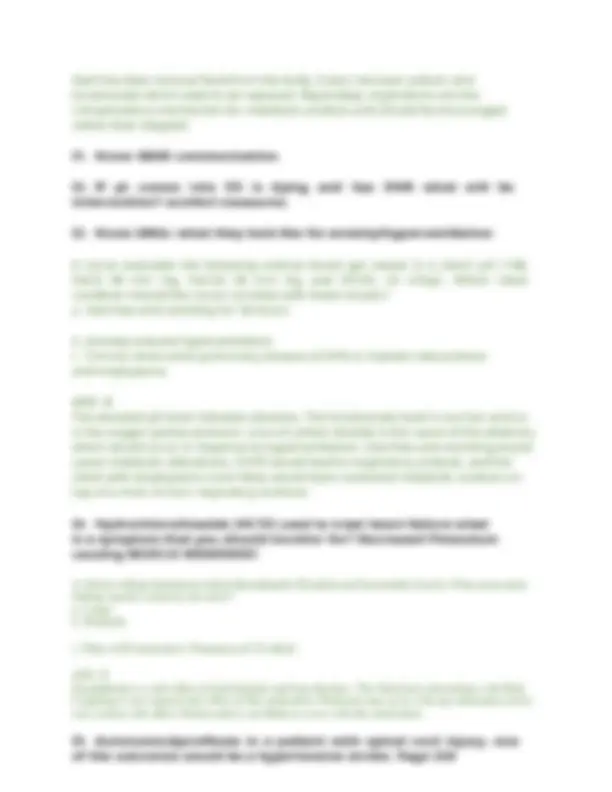

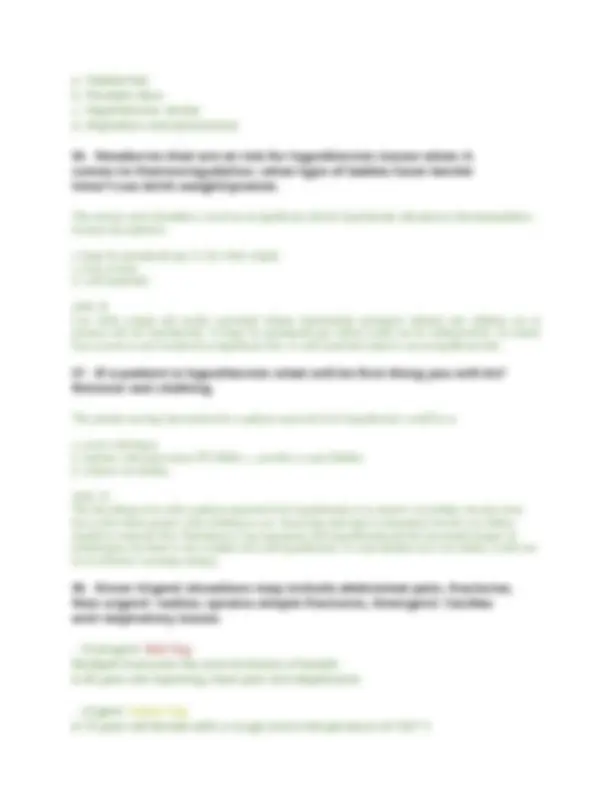
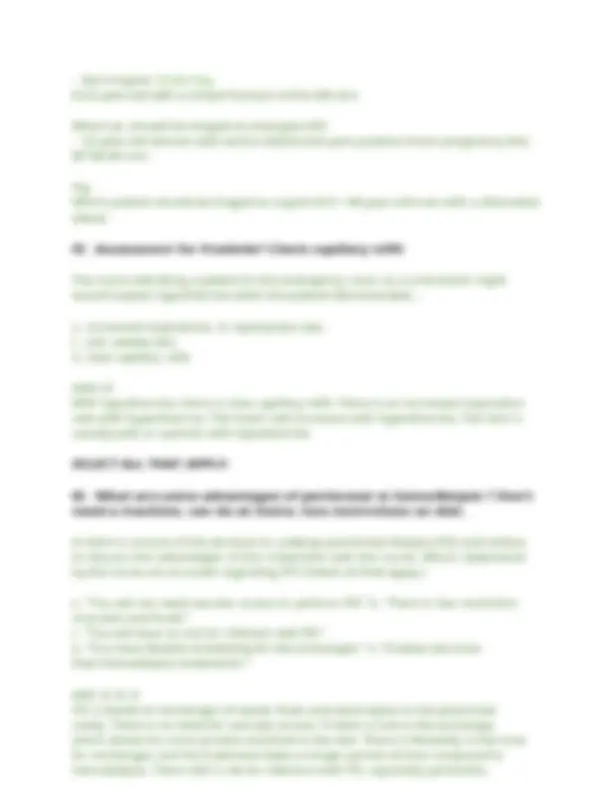

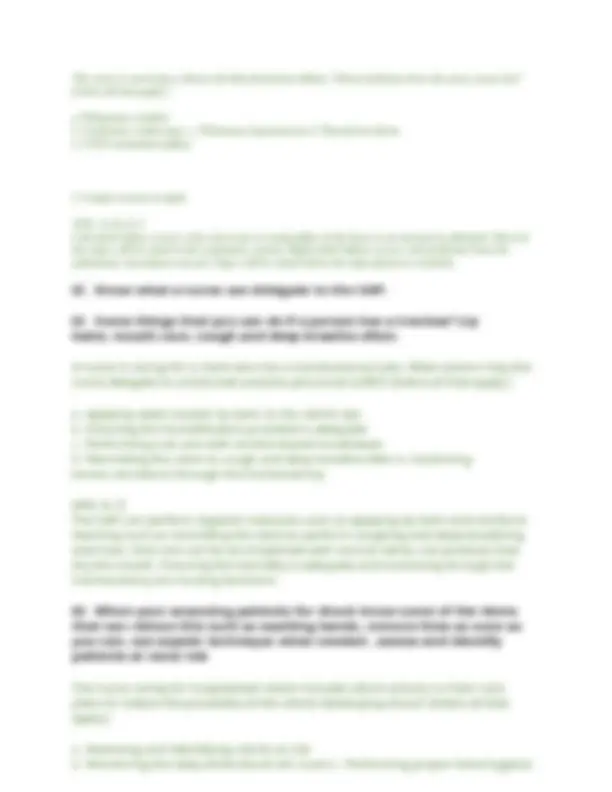

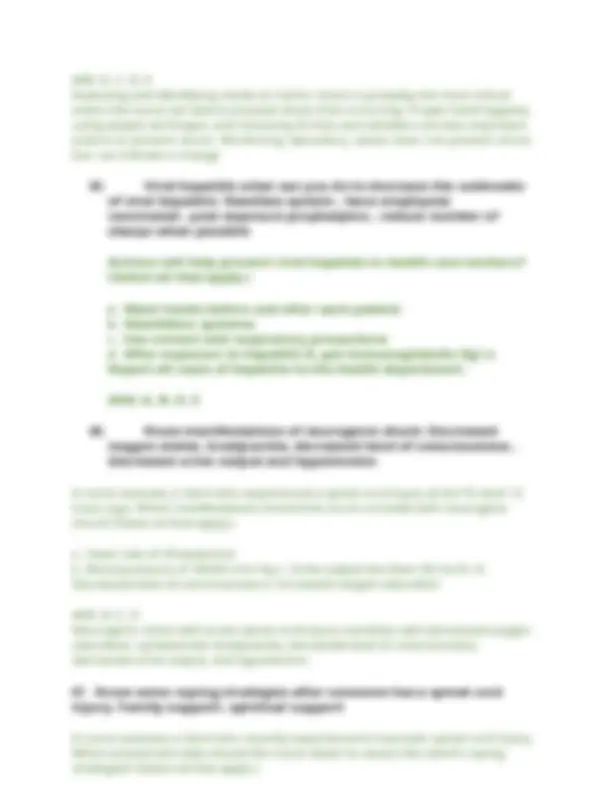

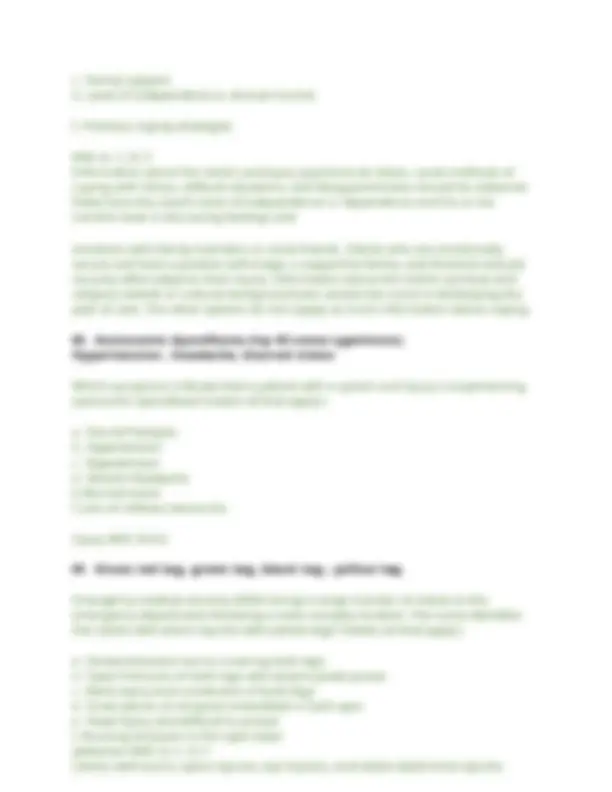

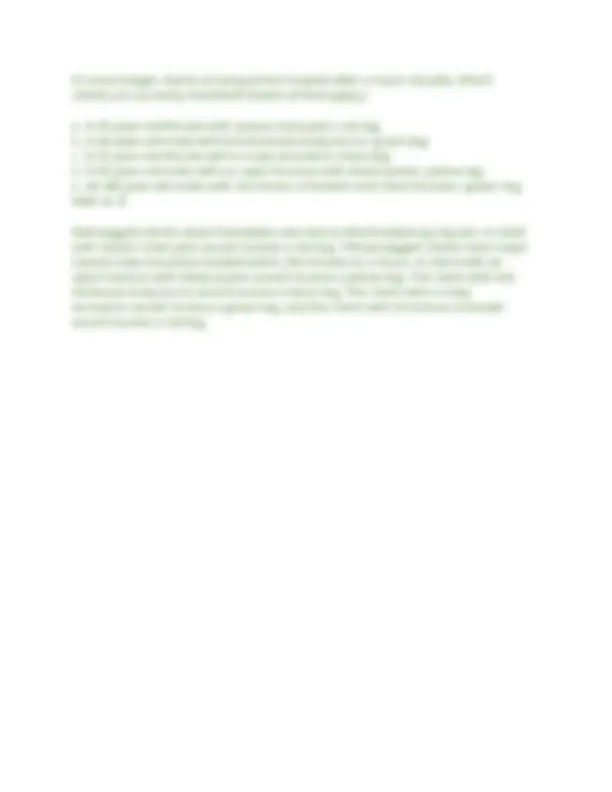


Study with the several resources on Docsity

Earn points by helping other students or get them with a premium plan


Prepare for your exams
Study with the several resources on Docsity

Earn points to download
Earn points by helping other students or get them with a premium plan
Community
Ask the community for help and clear up your study doubts
Discover the best universities in your country according to Docsity users
Free resources
Download our free guides on studying techniques, anxiety management strategies, and thesis advice from Docsity tutors
NURS 1025C Final Exam Questions with Solution
Typology: Exams
1 / 40

This page cannot be seen from the preview
Don't miss anything!

































1. Autonomic dysreflexia happens with spinal cord injuries some causes include bladder distention, tight clothing, increased room temperature and fecal impaction. If a patient comes in and their BP is high, they have a flushed face & blurred vision one of the things you will do is check their bladder for distention. A nurse assesses a client with a spinal cord injury at level T5. The client’s blood pressure is 184/95 mm Hg, and the client presents with a flushed face and blurred vision. Which action should the nurse take first? a. Initiate oxygen via a nasal cannula. b. Place the client in a supine position. c. Palpate the bladder for distention. d. Administer a prescribed beta blocker. ANS: C The client is manifesting symptoms of autonomic dysreflexia. Common causes include bladder distention, tight clothing, increased room temperature, and fecal impaction. If persistent, the client could experience neurologic injury. Precipitating conditions should be eliminated and the physician notified. The other actions would not be appropriate. EXTRA: The nurse is caring for a patient with spinal cord injury (SCI). Which interventions does the nurse use to target and prevent a potential SCI complication of Autonomic Dysreflexia? (Select all that apply) a. Frequently perform passive ROM exercises. b. Loosen or remove any tight clothing. c. Monitor stool output and maintain a bowel program. d. Keep the patient immobilized with neck or back braces. e. Monitor urinary output and check for bladder distention. ANS: B,C,E 2. Hepatitis A, fecal contamination, food and water.
A 70-kg adult with chronic renal failure is on a 40-g protein diet. The client has a reduced glomerular filtration rate and is not undergoing dialysis. Which result would give the nurse the most concern?
a. Albumin level of 2.5 g/dL b. Phosphorus level of 5 mg/dL c. Sodium level of 135 mmol/L d. Potassium level of 5.5 mmol/L ANS: A Protein restriction is necessary with chronic renal failure due to the buildup of waste products from protein breakdown. The nurse would be concerned with the low albumin level since this indicates that the protein in the diet is not enough for the client's metabolic needs. The electrolyte values are not related to the protein- restricted diet. Which data will the nurse monitor in relation to the 4+ pitting edema assessed in a patient with cirrhosis? a. Hemoglobin b. Temperature c. Activity level d. Albumin level ANS: D The low oncotic pressure caused by hypoalbuminemia is a major pathophysiologic factor in the development of edema. The other parameters should also be monitored, but they are not directly associated with the patient's current symptoms
7. Hyperthermia, what are some things that you may find? Red flushed skin. The nurse admitting a patient to the emergency department on a very hot summer day would suspect hyperthermia when the patient demonstrates a. decreased respirations. b. low pulse rate. c. red, sweaty skin. d. slow capillary refill. ANS: C With hyperthermia, vasodilatation occurs causing the skin to appear flushed and warm or hot to touch. There is an increased respiration rate with hyperthermia. The heart rate increases with hyperthermia. With hypothermia there is slow capillary refill. 8. Heart failure patient, instruct to do what? Daily weights. A client with a history of heart failure is being discharged. Which priority instruction will assist the client in the prevention of complications associated with heart failure? a. "Avoid drinking more than 3 quarts of liquids each day." b. "Eat six small meals daily instead of three larger meals." c. "When you feel short of breath, take an additional diuretic." d. "Weigh yourself daily while wearing the same amount of clothing.” ANS: D
and thus avoid complications. Other signs of worsening heart failure include increasing dyspnea, exercise intolerance, cold symptoms, and nocturia. A client asks the nurse why it is important to be weighed every day if he has right-sided heart failure. What is the nurse's best response? a. "Weight is the best indication that you are gaining or losing fluid." b. "Daily weights will help us make sure that you're eating properly." c. "The hospital requires that all inpatients be weighed daily." d. "You need to lose weight to decrease the incidence of heart failure.” ANS: A Daily weights are needed to document fluid retention or fluid loss. One liter of fluid equals 2.2 pounds.
9. Vtach, Vfib, with Vfib what is first priority? Defibrilate AED electrodes are placed on a patient who is unconscious and pulseless. The nurse prepares to immediately defibrillate if the monitor shows which cardiac anomaly? a. Third-degree heart block b. Pulseless electrical activity c. VF d. Idioventricular rhythm ANS: C A patient is found pulseless and the cardiac monitor shows a rhythm that has no recognizable deflections, but instead has coarse “waves” of varying amplitudes. What is the priority ACLS intervention for this rhythm? a. Immediate defibrillation b. Administer epinephrine IVP c. Administer lidocaine IVP d. Non-invasive temporary pacing ANS: A **10. Know how to count heart beats on the strips. V-TACH: V-FIB:
client?
15. If a patient dies in the hospital and their patient is at the bed side one of the things that you will do? Ask if they want **some time alone with their loved one.
client? a. "Avoid taking aspirin or aspirin-containing products." b. "Increase your intake of foods high in potassium."
get digoxin & epogen, in a patient that has kidney failure and takes diogxin
what are they at risk for? Digoxin toxicity. Nausea & vomiting can also alter digoxin levels, so review potassium levels.
24. Best way to measure core body temperature? Rectal The most appropriate measure for a nurse to use in assessing core body temperature when there are suspected problems with thermoregulation is a(n) a. oral thermometer. b. rectal thermometer. c. temporal thermometer scan. d. tympanic membrane sensor. ANS: B The most reliable means available for assessing core temperature is a rectal temperature, which is considered the standard of practice. An oral temperature is a common measure but not the most reliable. A temporal thermometer scan has some limitations and is not the standard. The tympanic membrane sensor could be used as a second source for temperature assessment. **25. Patient with end stage liver cirrhosis is combative and confused, what will you ask the doctor to give them? Lactulose.
arrives what do you do? Ask if they want to be present for the resuscitation. The emergency department team is performing cardiopulmonary resuscitation on a client when the client’s spouse arrives at the emergency department. Which action should the nurse take first?
a. Request that the client’s spouse sit in the waiting room. b. Ask the spouse if he wishes to be present during the resuscitation. c. Suggest that the spouse begin to pray for the client. d. Refer the client’s spouse to the hospital’s crisis team. ANS: B If resuscitation efforts are still under way when the family arrives, one or two family members may be given the opportunity to be present during lifesaving procedures. The other options do not give the spouse the opportunity to be present for the client or to begin to have closure.
32. Who has temperature regulation issue? The elderly because they can’t regulate body temp and your metabolism slows down. A volunteer at the senior center asks the visiting nurse why the senior citizens always seem to be complaining about temperatures. The nurse's best response is that older people have a diminished ability to regulate body temperature because of a. active sweat glands. b. increased circulation. c. peripheral vasoconstriction. d. slower metabolic rates. ANS: D Slower metabolic rates are one factor that reduces the ability of older adults to regulate temperature and be comfortable when there are any temperature changes. As the body ages, the sweat glands decrease in number and efficiency. Older adults have reduced circulation. The body conserves heat through peripheral vasoconstriction, and older adults have a decreased vasoconstrictive response, which impacts ability to respond to temperature changes. 33. How is Hep B spread: Sexual contact, needles, blood transfusions. A nurse assesses clients at a community health fair. Which client is at greatest risk for the development of hepatitis B? a. A 20-year-old college student who has had several sexual partners b. A 46-year-old woman who takes acetaminophen daily for headaches c. A 63- year- old businessman who travels frequently across the country d. An 82-year-old woman who recently ate raw shellfish for dinner ANS: A Hepatitis B can be spread through sexual contact, needle sharing, needle sticks, blood transfusions, hemodialysis, acupuncture, and the maternal-fetal route. A person with multiple sexual partners has more opportunities to contract the infection. Hepatitis B is not transmitted through medications, casual contact with other travelers, or raw shellfish. Although an overdose of acetaminophen can
frequently in international travelers. Hepatitis A is spread through ingestion of contaminated shellfish. What is the major source of hepatitis B transmission to health care workers? a. Improper hand washing b. Needle sticks c. Touching contaminated surfaces d. Contact with infected stool ANS: B
34. Someone has A-fib what anticoagulant med is given? Coumadin (warfarin) A nurse evaluates prescriptions for a client with chronic atrial fibrillation. Which medication should the nurse expect to find on this client's medication administration record to prevent a common complication of this condition? a. Sotalol (Betapace) b. Warfarin (Coumadin) c. Atropine (Sal-Tropine) d. Lidocaine (Xylocaine) ANS: B Atrial fibrillation puts clients at risk for developing emboli. Clients at risk for emboli are treated with anticoagulants, such as heparin, enoxaparin, or warfarin. Sotalol, atropine, and lidocaine are not appropriate for this complication. 35. Tall peaked T waves? Hyperkalemia, check potassium. The nurse is reviewing ECG results of a patient admitted for fluid and electrolyte imbalances. The T-Waves are tall and peaked. The nurse reports this finding to the provider and obtains an order for which serum level test? a. Sodium b. Glucose c. Potassium d. Phosphorus ANS: C 36. In early stage heart failure what physiological signs? Increased heart rate & respiratory rate. A client is admitted with early-stage heart failure. Which assessment finding does the nurse expect? a. A decrease in blood pressure and urine output b. An increase in creatinine and extremity edema c. An increase in heart rate and respiratory rate d.A
decrease in respirations and oxygen saturation